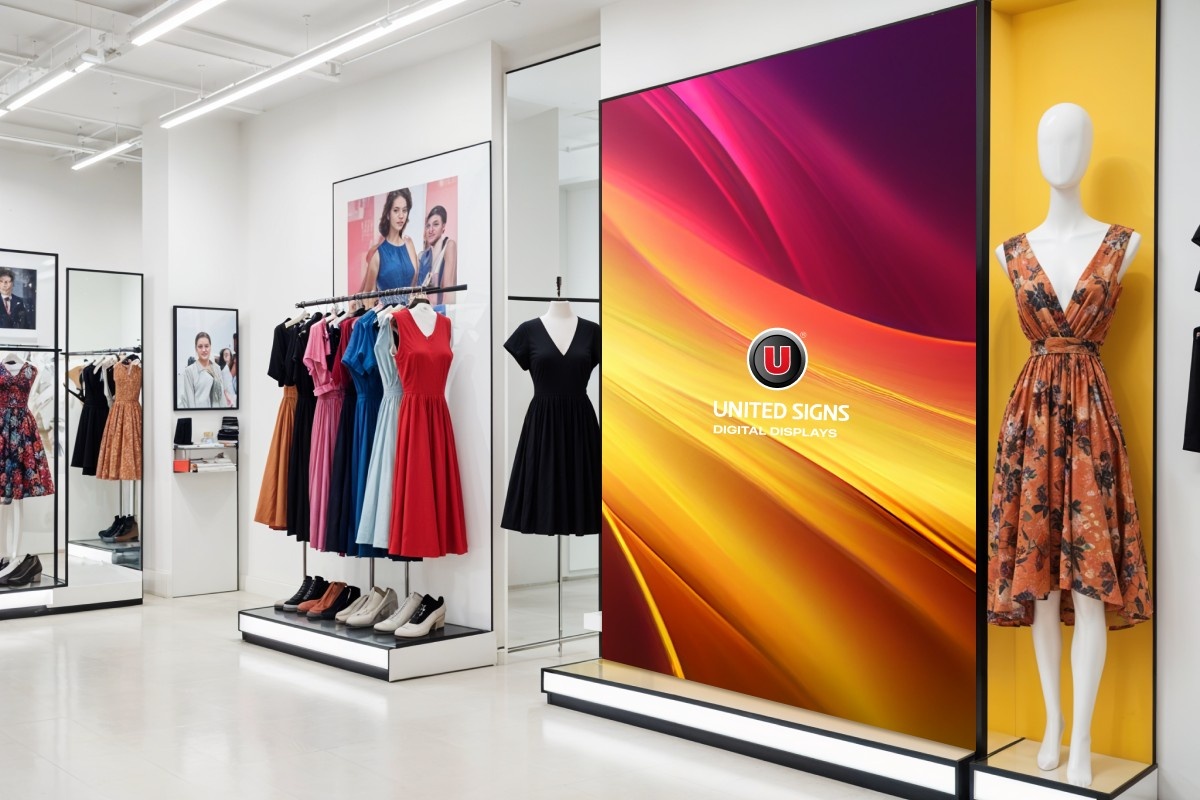
Q1 2026: Turn Holiday Hangovers into Resolution Revenue
Hey folks, holidays are winding down, but if you’re a retailer, church leader, or venue manager bracing for a sleepy
A National Sign Company Recognized as a Leader in Architectural, Digital & World-Class Program Management.

Being an attention-grabbing shopper in the current fast-moving retail world is nothing short of a herculean task. How can your message stand out when there are several other brands also seeking the same consumer’s attention? The solution lies in retail digital signage. This powerful tool is changing the face of retail; offering dynamic and interactive platforms to engage customers. So, let us explore different types of retail digital signage and some examples that standout, together with benefits they can bring to your business.

Interactive kiosks are quickly becoming a common feature in modern retail stores. These touchscreen devices enable customers to go through product catalogs, check inventory, and even place orders. They enhance shopping by giving instant access to information and personalized recommendations.

Digital menu boards commonly found at fast food restaurants are now being introduced in shops, too. These displays, which keep changing, can show daily specials, highlight offers, and contain detailed product information. Apart from being eye-catching, these displays can easily be updated – meaning that content will always remain fresh and relevant.

For an extremely engaging encounter, go for video walls. These are made up of many screens working in synchrony, and they can change the look of any store. Video walls have a spellbinding feature that captures your audience unlike never before whether you want to feature your new product line or just make up a brand story.

Digital window displays are great for attracting the attention of people walking by. These ultra-bright and high-definition screens can cut through the glare and be seen even in direct sunlight, making them ideal for street-facing windows. They offer a dynamic way to display promotions, new arrivals, and brand messages.
Nike’s Flagship Store
Nike’s flagship outlet in New York City provides a beautiful illustration of how digital signage amplifies the experience of shopping. The shop has interactive kiosks on which clients can design their own sneakers and view digital mannequins with product information on them. They can also make a buying decision based on the brand’s running ad campaigns. These excellent elements combine to create an experiential retail environment that is both compelling and memorable.
United Signs’ Unique Solution
At United Signs, we are proud to offer our customers cutting-edge digital signage solutions that are tailored to suit their needs. A unique example is the partnership we formed with a large retail chain to develop an interactive digital wall. It offers such an exciting experience by helping the buyers see how different clothes fit them without actually trying them on. This has been noted to help in drawing customers who spend more time in the store.
Digital signage allows for engaging and interactive shopping experiences. Consumers can instantly access information, receive personalized suggestions, and enjoy faster purchasing processes. In turn, this kind of involvement nurtures brand loyalty while encouraging repeat visits.
Through displaying promotions, up-selling products and providing detailed product information; retailers can increase sales. Consequently, research has shown that these displays can significantly increase impulse purchases as well as average purchase amounts.
This is because unlike traditional static signs which cannot be quickly changed, digital billboards are easy and quick to update. Thelps retailers adapt to market trends with updated contents, diversify their promotion messages, or even fix errors as they come about instead of waiting for weeks or months like before when printed communication was used. Over time, this can lead to substantial savings compared to printing and replacing static signs.
There is a possibility of data collection about customers’ behavior by digital signage systems. As a result, retailers can understand which products are popular among the clients, how they interact with advertising screens, and which promotions are most effective. This will help improve marketing tactics and overall store performance.

In short, retail digital signage is turning things around in the industry. It provides a fluid way for merchants to communicate with clients, increase their sales revenue, and enhance shopping experience at large. If you want your retail space to reach higher heights, check out United Signs’ pioneering solutions.

Hey folks, holidays are winding down, but if you’re a retailer, church leader, or venue manager bracing for a sleepy

It’s the season of sparkle, smiles, and sales! As snowflakes (real or metaphorical) start falling and shoppers hunt for the

Crowds flood US retail floors on December 1, 2025, mesmerized by screens flashing tailored deals, that’s United Signs delivering 83%
We’d love to learn about your digital signage needs.


Thanks for stopping by! We're here to help, please don't hesitate to reach out.